Efforts Fall Short of Need
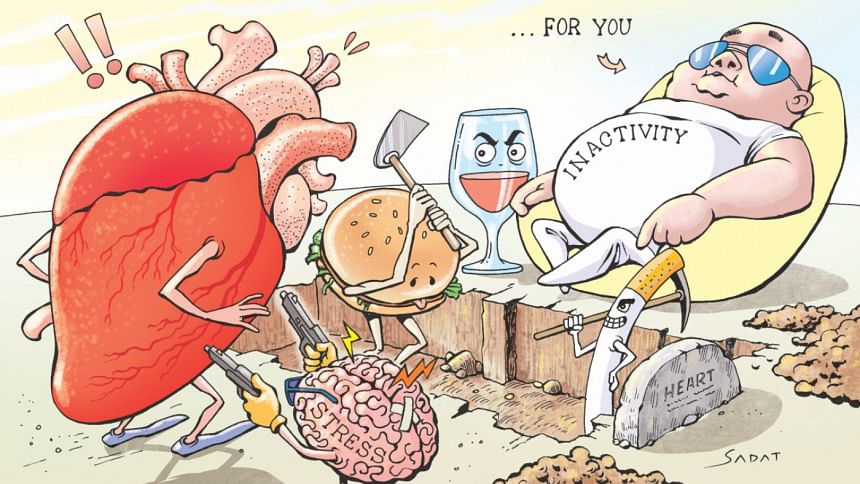
Abul Bashar went back home on Wednesday having waited for a heart surgery for two weeks at a public hospital in Dhaka. Exhausted from seeking out all the options, the 70-year-old and his family decided to give in to what fate has in store for them.
A patient of hypertension for more than a decade, he was diagnosed with heart block in April this year. Doctors at Chittagong Medical College Hospital (CMCH), the only public hospital outside Dhaka that has the infrastructure and manpower to conduct cardiac surgeries, suggested implanting stents. A stent is a spring-like object placed to open up a blocked artery of the heart.
The attempt of stenting failed and he was referred to the National Institute of Cardiovascular Diseases (NICVD) for a bypass surgery. Since construction work was ongoing at the NICVD, Bashar's wife Julekha Begum was told that an operation as critical as an open heart surgery would be highly risky for the dust all around.
What were the alternatives remaining then? Not many. And the cost goes higher and higher when patients have to move from a government hospital to an autonomous to a non-profit organisation to a private organisation.
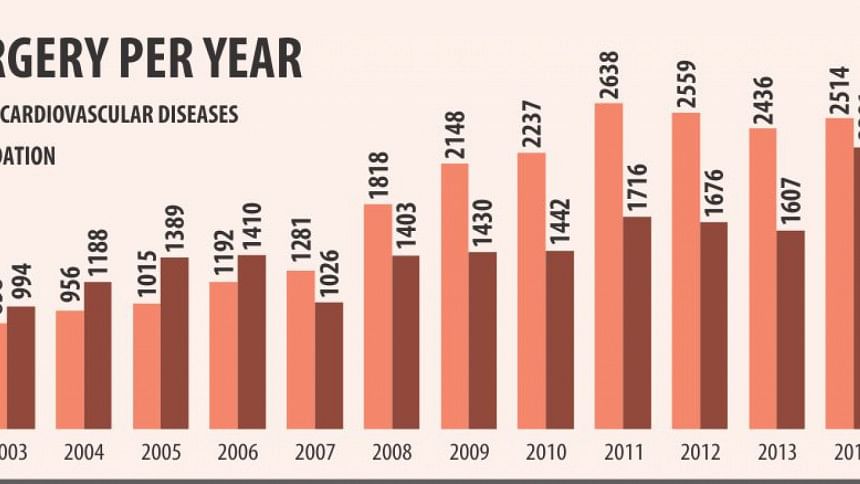
FACILITIES CONCENTRATED IN DHAKA
According to the latest data from Bangladesh Association of Cardiovascular and Thoracic Anaesthesiologists, the country has only 25 cardiac care facilities, both public and private, equipped to conduct cardiovascular surgeries. Twenty of them are in Dhaka, two in Chittagong, one in Sirajganj, one in Khulna and one in Dinajpur.
The surgery unit at Zia Heart Foundation, a non-profit facility in Dinajpur, has not been functional since 2016. Its secretary-general AK Azad says the reason is that the cost of running the unit was much more than its income. All the equipment there is now sitting idle.
The scenario is grim. From existing data and talks with a number of cardiologists and cardiac surgeons, The Daily Star learnt that the number of facilities is far less than what is necessary to cater to patients suffering from cardiac problems.
There has been no survey to put a figure around the number of cardiac patients in the country.
But according to the World Health Organisation, there has been an increasing trend in the mortality rate of patients with cardiovascular diseases. In 2014, such patients accounted for 17 percent of total deaths whereas nearly three decades earlier all non-communicable diseases together, including heart diseases, had been responsible for only eight percent of total mortality.
The numbers don't reflect the development measures taken in the cardiac healthcare industry, probably because it fell behind the pace at which patients grew.
Rasul Amin, a cardiologist from Bangabandhu Sheikh Mujib Medical University (BSMMU), said cardiac care has improved from what it was in the '80s and '90s.
Patients at the time used to go to neighbouring India and Thailand for interventional procedures like angiogram, a type of X-ray imaging to see the heart's blood vessels, and implanting stents, he said, adding that these services are available now not only in Dhaka but also in Chittagong, Dinajpur, Cumilla and Khulna.
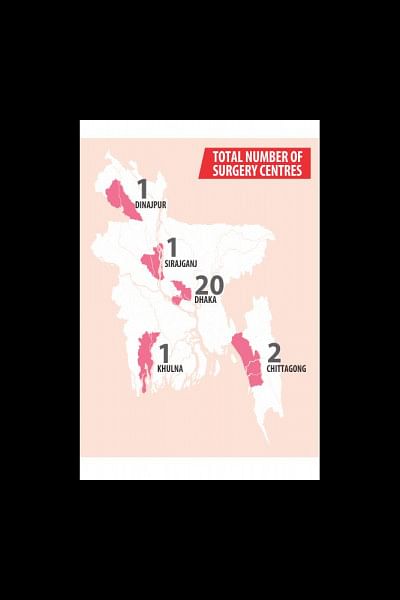
Records of the NICVD and the National Heart Foundation Hospital and Research Institute (NHFHRI), show that from 2000 to 2017 the former has increased its surgery capacity almost three times its initiation, other invasive procedures more than four times while NHFHRI has increased its surgery capacity eight times and other invasive procedures 11 times.
These are the two hospitals in Dhaka that carried out 43 percent of a total of 11,674 surgeries last year. The 23 other facilities combined carried out the rest. There were 669 surgeries outside Dhaka, including 75 at the CMCH.
This is the backdrop to Abul Bashar being referred to Dhaka. When the only specialised public hospital for cardiac care, NICVD, refused to operate on him, Bashar, who retired as a fourth-class employee of a private company in Patenga, Chittagong ran out of options for affordable treatment.
However, Rasul, the cardiologist from BSMMU, said the government has fixed the prices of implanting objects like stents lowering the gap of treatment expenditure between private hospitals and public ones as private hospitals used to sell them at higher prices.
Emergency drugs like streptokinase are free at a few public hospitals, mostly tertiary ones at divisional headquarters, which have the logistics to manage cardiac arrest patients.
If the medicine is administered within 12 hours after a heart attack is confirmed through electrocardiography (ECG), which is as cheap as Tk 100 in some facilities, or other tests, the chances of recovery are 50-60 percent, Rasul added.
WHY CARDIAC CARE SHOULD BE AVAILABLE AT EVERYONE'S DOORSTEP
It is internationally recommended that the risk can be brought down to five percent if a cardiac procedure called primary PCI (percutaneous coronary intervention) can be performed on a person within just two hours from the onset of a heart attack or, in medical terms, acute myocardial infarction.
The infrastructure and skilled hands needed to perform the procedure are not available even at all public medical college hospitals at divisional headquarters, said Professor Mohammad Badiuzzaman, an interventional cardiologist at the NHFHRI.
There are some 64 catheterisation laboratories or cath labs at 46 centres across the country, according to a stent supplier company seeking anonymity. The invasive procedure can be done there only if a team of trained cardiologists and technicians is present to deal with an emergency situation.
Awareness is also necessary, said Badiuzzaman. Even if patients in the capital, where most of the centres are located, are rushed through the perennial traffic to one of the facilities within the “golden hour” following a heart attack, it is difficult to make them understand the urgency.
“Even if they [patient and his relatives] are rich enough to do everything, they remain unconvinced… and the golden hour slips away to open up the block responsible for the heart attack,” Badiuzzaman added.
For those who live outside the capital, taking advantage of the “golden hour” is a rare opportunity no matter if they are aware of it or can afford it.
“There is a huge gap between the demand and supply…We have to take the facilities to the people around the country,” said Nazeem A Choudhury, director & chief executive of AFC Health Ltd., the country's first chain of cardiac hospitals.
Started in Khulna in December 2014, the hospital chain now has cardiac care facilities in Dhaka, Chittagong and Cumilla as well, he said in an interview by email. Fortes Hospital Khulna carried out 67 cardiovascular surgeries last year.
There are other cardiac diseases other than heart attack and coronary artery diseases caused by blockages in blood vessels connected to the heart.
Congenital heart diseases involving heart abnormalities present since birth, arrhythmia when heart beats too quickly, too slowly or in an irregular pattern, and rheumatic fever inflicted heart valve damage are even less known.
All these heart ailments may ultimately lead to heart failure. One or more blood vessels that supply nutrition and oxygen to the heart may become blocked. If it happens all of a sudden, it is a heart attack, and if it happens gradually over a period of time, symptoms like chest pain and breathlessness appear.
THE SPECTRE OF CONGENITAL HEART DISEASE
“What is alarming is that we have noticed over the last one decade a significant number of them [patients of cardiovascular diseases] are below 40 or even in their early 20s,” Badiuzzaman said.
Exactly what is causing this is unknown but “we know of some associated (risk) factors like hypertension, diabetes, smoking, high cholesterol levels in blood, obesity, physical inactivity, unhealthy dietary habits which are directly or indirectly contributing to the development of coronary heart disease. Plus genetic factors play an important role, because a large number of people from South Asia, especially from Bangladesh, are being diagnosed with heart diseases, irrespective of their social class and whether or not they live abroad.”
Diagnosis of congenital heart ailments may be done at the upazila level since the government is posting cardiologists there. They refer patients to Dhaka Shishu Hospital, NHFHRI, NICVD or CMH Dhaka.
Parents in most cases delay the treatment considering the cost and because of the lack of knowledge until they cannot ignore it anymore, said Tawfiq Shahriar Huq, who specialises in treating congenital heart issues.
One such case is that of Sharmin Sultana who stepped into adulthood with two holes in her heart since birth.
The 18-year-old was recommended surgery twice in 2013 and 2015. Abandoned by her parents, she was brought up by relatives who could not afford to pay for the operation.
Now married for two months, her migrant husband insisted that the congenital defects be treated as she is losing consciousness every now and then.
As Sharmin spoke, Tawfiq scanned her test reports at the NHFHRI.
He said such matters would have been best handled if the person were still a child. “As she grew up, the heart changed its shape and behaviour to adjust to the abnormalities.” Now doctors have to fix those first before treating the problem.
“It becomes complex and the chances of getting back a normal life get slim.”
There is no survey to show as to how many children are born with heart problems in Bangladesh.
Considering the global scenario, it is said that one percent of all children born have different ailments since birth and a large number of them are patients of congenital heart disease, Tawfiq said.
In many parts of the world, there is prenatal diagnosis when doctors can identify or speculate probable defects that the child would be born with and accordingly they can prepare parents in advance to deal with a situation that may arise after childbirth.
That doesn't happen in Bangladesh. Congenital heart diseases are not diagnosed until symptoms appear much later. And the facilities to treat them are Dhaka-centric and inadequate.
Last year, 488 congenital heart surgeries, the highest so far, took place at the NHFHRI followed by 387 at the NICVD. Outside Dhaka only a handful of operations were conducted.
Eight-year-old Afreen was referred to the NICVD one and a half years ago when she had a drastic loss of appetite and breathlessness. Following tests costing her farmer father Ershad Sheikh Tk 3,500, doctors there said she had a hole in her heart.
HOW AFFORDABLE IS THIS “NOT-SO-EXPENSIVE” TREATMENT?
Ershad was also told to come back to the hospital for Afreen's surgery six months later when a foreign team of experts would visit the hospital and that the operation would cost Tk 1.3 lakh.
He then tried homeopathic treatment in vain. With the severity of the symptoms, Ershad came to the Heart Foundation Hospital with his daughter on September 21.
The girl, looking all skin and bones, was staring at her father as he told The Daily Star the next afternoon that he didn't have the full amount—Tk 1.55 lakh—for the operation. Selling his property, he managed some cash.
The rest will come from a welfare fund, the hospital's authorities said.
Tawfiq said Afreen would get a normal life since she was still too young.
Professor Farooque Ahmed, a cardiac surgeon, said heart surgeries involve high technology and complex procedures, which is why they are expensive.
“Precise assessment, precise decision, precise surgery… outcome is good.” There is limited scope for making any mistake.
At the NHFHRI, a valve replacement surgery or open heart surgery costs Tk 1.3-2 lakh while in the US the expense is at least Tk 24 lakh.
Doctors ensure maximum utilisation of resources to minimise the cost as “we don't have enough of them at our disposal,” Farooque said.
For example, a device called stabiliser designed to keep the heart beating while the operation goes on is used 14 times by re-sterilising it. The stabiliser itself costs Tk 1.2 lakh and American doctors throw it away once used fearing spread of infections like HIV.
In the developed world, Farooque said, “they have insurance coverage. But in our country mostly it [the expenditure] is paid out of pocket.”
Since HIV infection is a rare thing here, doctors consider using the device repeatedly to reduce the cost, he added.
But even after the cost is reduced, treatment remains beyond reach for most cardiac patients like Bashar, Afreen or Sharmin.



 For all latest news, follow The Daily Star's Google News channel.
For all latest news, follow The Daily Star's Google News channel. 

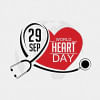
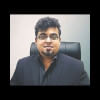
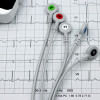
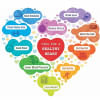
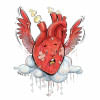
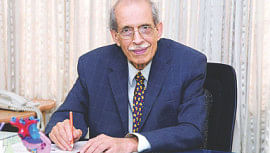



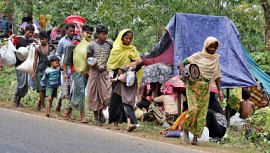
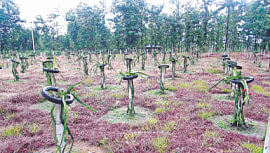
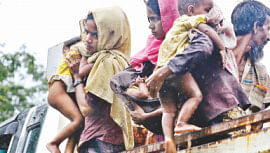
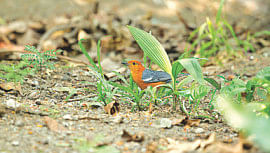
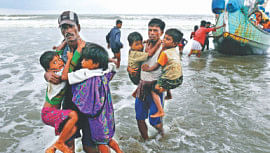
Comments